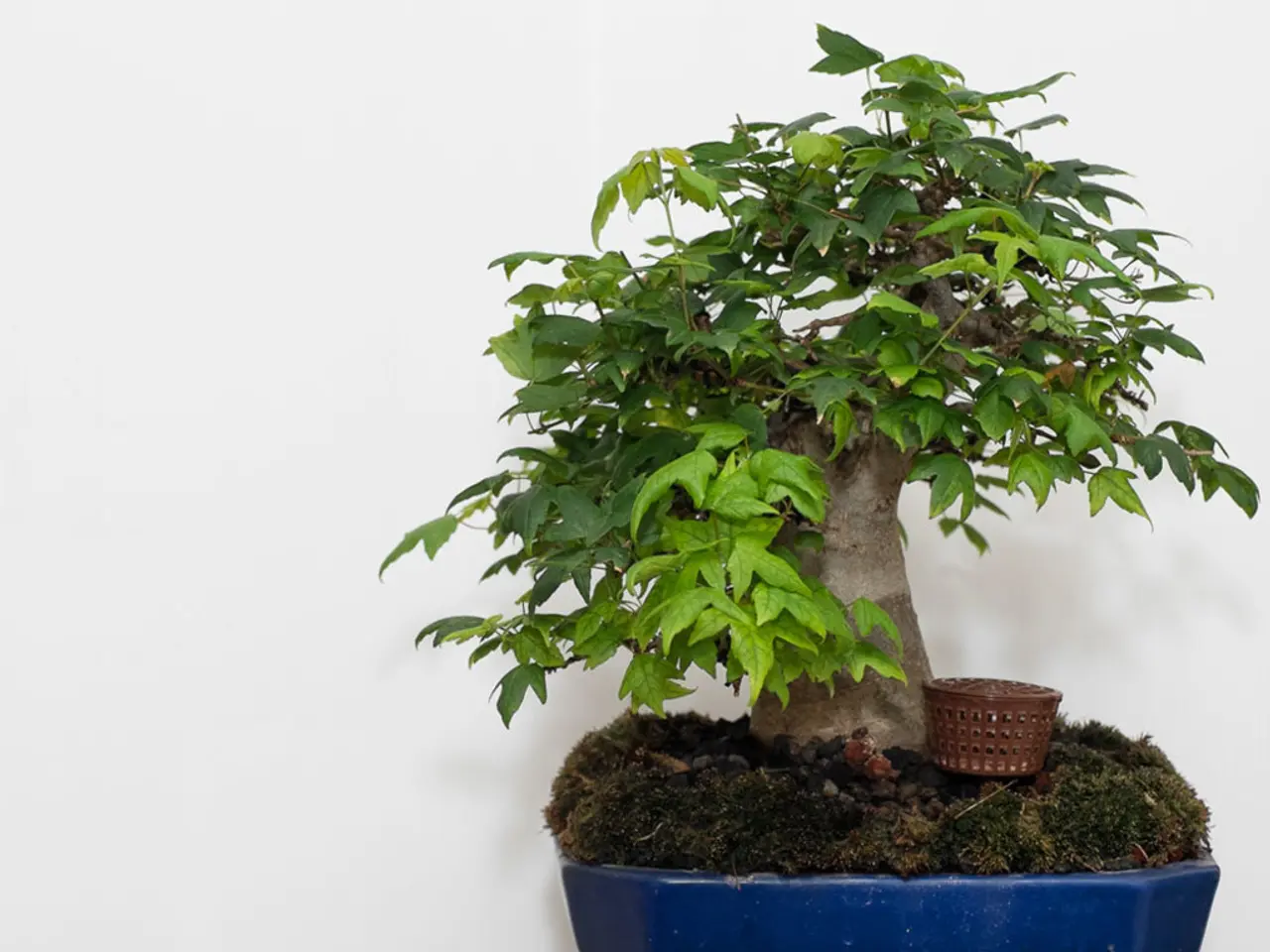Bonsai Root Revision During Transplanting: Comprehensive Procedure Breakdown
In the world of horticulture, few pursuits are as captivating as the art of bonsai. By meticulously following the outlined steps, one can release the full potential of their bonsai, ultimately yielding a masterpiece of horticultural artistry.
When tending to your bonsai, it's essential to approach root care with care and precision. Cleaning bonsai roots should not be done haphazardly, as this can cause root damage and washing away of beneficial microorganisms. Instead, use a soft brush or your fingers to gently remove excess soil and debris.
Identifying nutrient deficiencies in bonsai root systems is crucial for maintaining their health. Observe the overall health and appearance of the tree and its leaves. Common signs of nutrient deficiencies include yellowing leaves, stunted growth, leaf tip burn or browning, wilting, and general diminished vitality. Because the roots absorb nutrients, poor root health can also lead to deficiencies manifesting above ground.
Addressing nutrient deficiencies involves several steps. First, use a balanced bonsai fertilizer tailored for your bonsai species to supply essential macronutrients (nitrogen, phosphorus, potassium) and micronutrients (magnesium, iron, calcium). Regular repotting (every 1–2 years) is also necessary to refresh soil and prevent root-bound conditions which can restrict nutrient uptake. Ensure proper soil conditions with well-draining bonsai soil mixes to maintain healthy root respiration and nutrient absorption. Monitor and adjust soil pH, as incorrect pH can lock out nutrients, using tools like a pH meter and amendments such as dolomite lime.
Avoid nutrient burn by not over-fertilizing; excess nutrients can cause leaf burn and disrupt normal metabolic functions, visible as browning or yellowing leaf tips. Maintain proper watering and environmental conditions (humidity, light, air circulation) to support healthy roots and nutrient uptake. To confirm specific deficiencies, closely monitor symptoms and consider soil or substrate testing if possible. Early detection through regular inspection and appropriate care will keep bonsai root systems nutrient-healthy and flourishing.
After cleaning and pruning the roots, a thorough final inspection is necessary to identify any remaining issues or imperfections before repotting the bonsai. It's not uncommon for bonsai enthusiasts to wonder if cleaning their tree's roots will cause shock, but when done gently and correctly, this process can actually reduce stress and promote healthy growth. Dead, diseased, or damaged roots should be carefully removed with a pair of sharp, sterile scissors or pruning shears.
Trimming and pruning the roots of a bonsai is a delicate process that requires precision and control to promote healthy growth and prevent damage. The gentle handling of a bonsai's roots during repotting is essential to its long-term vitality, as it is in the most delicate of moments that the seeds of resilience are sown. Special care is essential when cleaning the roots of specific bonsai species, as certain species require gentle handling to preserve their fragile root structures, while others benefit from more rigorous cleaning.
It's recommended to clean a bonsai's roots every 2-5 years during repotting to maintain ideal root health and prevent soil depletion. Regular gardening tools should not be used to clean bonsai roots, as they can cause irreparable damage to delicate bonsai roots. The process of removing dead roots requires patience and a gentle touch to avoid damaging the surrounding bonsai roots. It's essential to remember that the roots are the lifeblood of your bonsai, and their health directly impacts the overall health and beauty of your tree.
In the delicate dance between nature and nurture, the true essence of bonsai cultivation is revealed. Through fastidious attention to detail, we cultivate not just plants, but living works of art. By understanding the needs of our bonsai and providing the care they require, we nurture the seeds of resilience and watch as our trees grow and flourish, becoming the masterpieces they were always meant to be.
[1] Nutrient Deficiencies in Bonsai: Identification and Treatment [2] Bonsai Root Pruning: When, Why, and How [3] Bonsai Soil and Repotting: A Comprehensive Guide [4] Adjusting Soil pH for Bonsai
[1] Proper root care is vital to maintaining the health and beauty of a bonsai, and identifying nutrient deficiencies is a crucial part of this process.
[2] Home-and-garden enthusiasts can enhance their bonsai lifestyle by learning how, when, and why to prune bonsai roots, as this practice has a significant impact on their overall health and growth.





